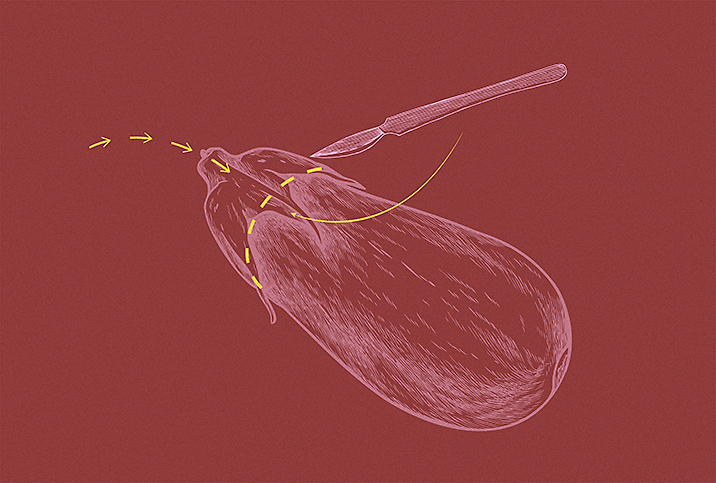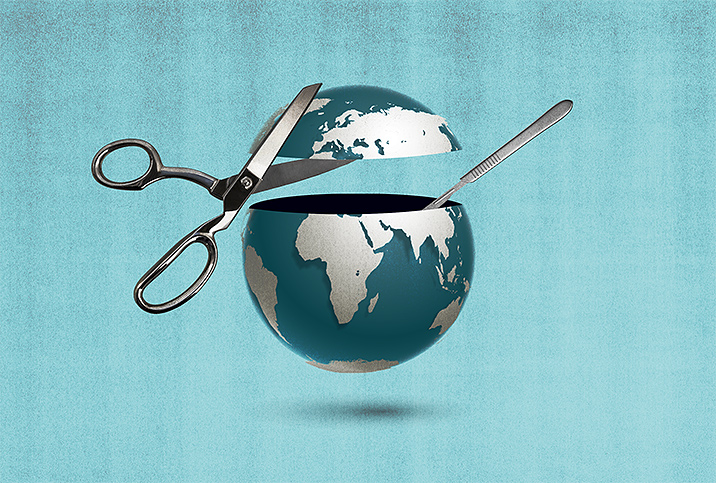Adult Circumcision Is Simple and Safe

Circumcision can be a sensitive and controversial topic. Most of said controversy, understandably, revolves around the practice of circumcision of newborn children and infants.
While the circumcision debate is important and will continue, adult circumcision is a bit more straightforward and common than many people may think.
Adult circumcision is an oft-performed procedure, according to Marah Hehemann, M.D., a urologist and an assistant professor at the Men's Health Center at the University of Washington in Seattle. Patients usually initiate the process, she added.
"The vast majority are patients that are referred to me by a primary care doctor who the patient has come forward [to] with some issues," Hehemann said. "It's not very common that primary care doctors do regular genital exams on young men."
She touted the proficiency of most urologists in performing the procedure and noted it is a highly routine, outpatient practice with few risk factors and a recovery process that is better described as irritating rather than painful.
Reasons for circumcision
Adult men usually have one of a few specific medical reasons for circumcision.
Phimosis
Phimosis refers to foreskin tightness and can be managed with the use of topical steroids twice a day for a few weeks at a time. The topical treatment can require multiple cycles and is not always effective. Circumcision is a more definitive answer to phimosis. The choice is very individualized, so men should consider both options before choosing the scalpel. Some men see long-term results from ointment treatments in as little as two weeks. Others don't see measurable improvements despite repeated attempts at the topical approach. In these cases, Hehemann recommends circumcision.
Frenular problems
A band of tissue at the bottom of the head of the penis, as it connects to the shaft, is called the penile frenulum. It is similar to the frenulum under the tongue. For some men, the penile frenulum can be short or tight and tear as a result of sexual activity or intercourse. Tears bleed, heal and scar, thus becoming more prone to tearing. If this occurs regularly, it can have a cumulative effect on sensitivity and pleasure.
To treat frenulum scarring, an adult circumcision can be performed along with a procedure called a frenuloplasty, which addresses a short or tight frenulum that has undesired medical or cosmetic effects. The frenuloplasty can be performed without circumcision; both are outpatient procedures.
Balanitis and cosmetic issues
Adult circumcision is often done for either hygienic or cosmetic reasons. One hygienic reason for circumcision might be as a long-term solution to balanitis, which is a bacterial or fungal infection of the head of the penis and the foreskin.
Cosmetic reasons can have medical merits, as well, particularly in helping the patient achieve certain aesthetic or perceived benefits to having a circumcised penis rather than an uncircumcised one.
The recovery process
For the most part, patients do well in surgery and have minimal pain afterward, Hehemann said. The recovery process is more of a temporary annoyance than an incapacitating injury. For several days after the procedure, the patient needs to wear a bandage on the head of the penis, but then the body effectively heals on its own, with minimal specific aftercare required from the patient.
Erections, particularly spontaneous ones such as "morning wood," can cause the most discomfort in the days immediately following the procedure.
The procedure is manageable with ibuprofen and acetaminophen, without relying on narcotic painkillers or potentially habit-forming substances.
Amin Herati, M.D., director of Male Infertility and Men's Health at Johns Hopkins Medicine in Baltimore, echoed all of Hehemann's statements regarding adult circumcision and its recovery process and considerations.
"It's a very low-risk procedure," he said. "The main thing that I counsel on is that, with the circumcision, whenever we take the foreskin off, we're using rough estimates of how much to leave or take. And so it can sometimes be a little challenging for the surgeon to use their judgment to say."
Common logic dictates pain should be at a minimum after just a few days to a week. Both Hehemann and Herati agreed the procedure is manageable with ibuprofen and acetaminophen, without relying on narcotic painkillers or potentially habit-forming substances.
The sensitivity factor
Most men who undergo circumcision because of tearing, bleeding or discomfort are satisfied with the results, according to Hehemann.
Both Herati and Hehemann said some patients have described increased sensitivity for the better in the head of the penis after circumcision. For the most part, though, men are just happy to get their pain and medical problems sorted out for the benefit of their overall satisfaction with their bodies.
"I know it's very controversial, but there are no good studies that demonstrate that either having a foreskin or not having a foreskin is better from a kind of pleasure or sexual standpoint," Hehemann said.
Herati speculated the perceived pleasure improvement could be derived from something as fundamental as what's called epithelial keratinization, which describes the gradual toughening process skin undergoes as it comes in contact or is under pressure from other skin or surfaces/textures.
'I know it's very controversial, but there are no good studies that demonstrate that either having a foreskin or not having a foreskin is better from a kind of pleasure or sexual standpoint.'
Keratinization is probably easiest to observe on the hands and feet, where the skin develops differently due to the extensive use of these appendages. But Herati said this process occurs elsewhere on the body, as well.
"The same phenomenon occurs on the phallus, because when it rubs against undergarments, it has to have a thickening of the cell layers in that area because of the repeated contact," he said, wondering whether this might be the reason some men experience an increase in sensitivity after being circumcised in adulthood.
Ultimately, the reasons for undergoing circumcision are up to the individual needs and desires of the patient.


















